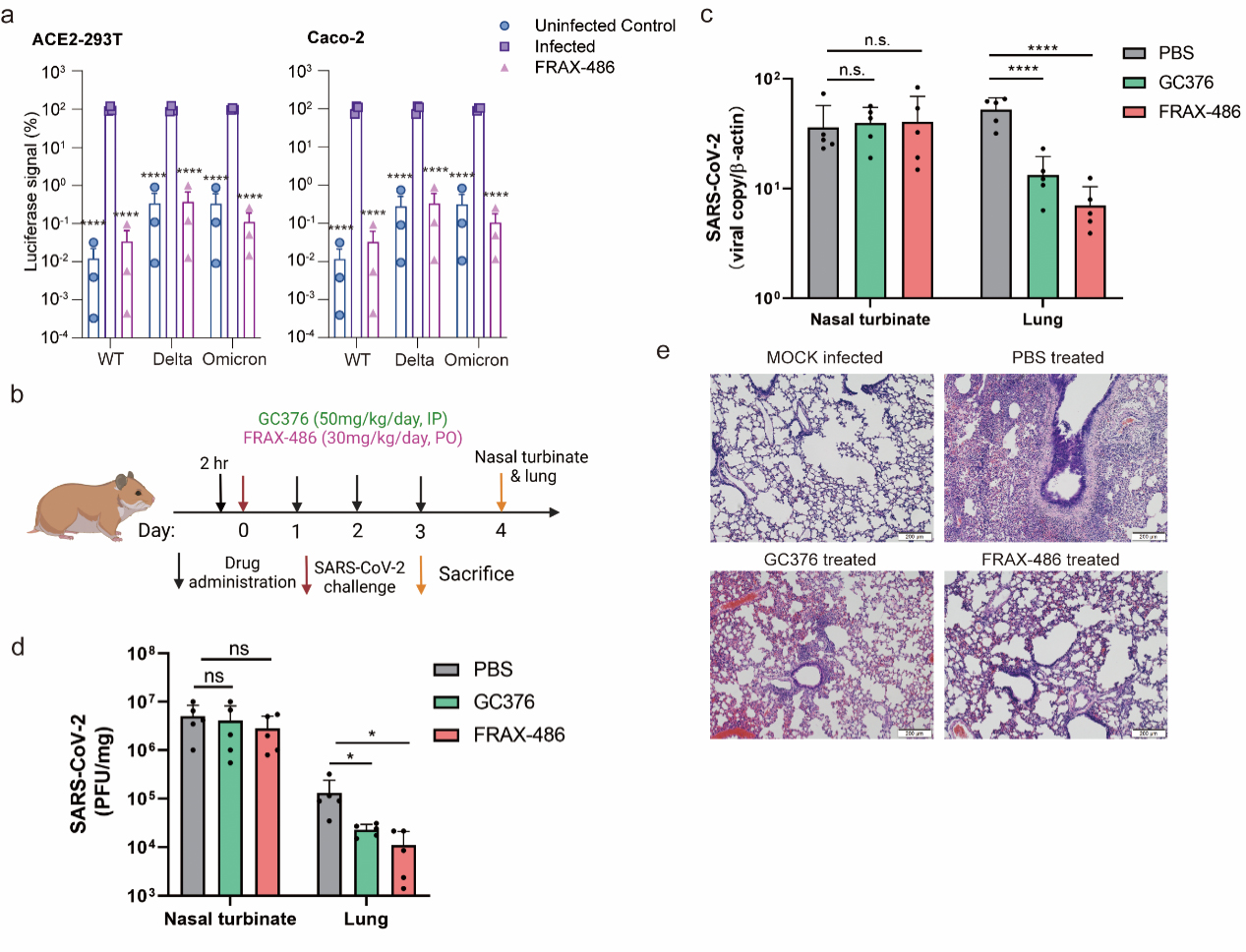The emergence of new viral strains represents a major challenge in the development of effective antiviral agents
Severe acute respiratory syndrome coronavirus 2 (SARS-CoV-2), the causative agent of coronavirus disease 2019 (COVID-19), has had a significant impact on healthcare systems and economies worldwide. The emergence of new viral strains represents a major challenge in the development of effective antiviral agents. The spike protein of SARS-CoV-2 interacts with ACE2 on the cell surface, facilitating viral attachment and entry. Spike protein also promotes ACE2 degradation, but the molecular mechanisms are not fully determined. In this study, Dr. Ming Liu et al from our laboratory showed that the spike-ACE2 complex is endocytosed and degraded via autophagy, in a manner that depends on clathrin-mediated endocytosis and PAK1-mediated cytoskeleton rearrangement. Importantly, through collaboration with Prof. Jasper Fuk-Woo Chan and Prof. Jincui Zhao, we found that the pan-PAK inhibitor FRAX-486 restores ACE2 surface expression and suppresses SARS-CoV-2 infection by various strains. FRAX-486-treated Syrian hamsters exhibit significantly decreased lung viral load and alleviated pulmonary inflammation. In summary, our findings show that host-targeting strategies maybe employed to combat emerging strains of SARS-CoV-2 infections.
Fig.1 PAK1 inhibitor exhibit broad-spectrum anti-SARS-CoV-2 activity. a. PAK1 inhibitor FRAX-486 prevented wild type (WT), Delta and Omicron pseudovirus entry to the host cells. b. Schematic picture of hamster infection model. c-d. Virus titters in the nasal turbinate and lung of the hamster treated with PBS (negative control), FRAX-486 and GC376 (positive control of a virus direct targeting agent). e. Lung histology showing reduced inflammation and hemolysis in treated hamsters.

Yuxia Zhang
22 October 2023